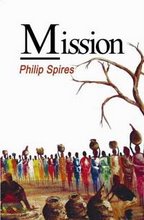This was a program that seemed so middle-of-the-road that attendance might mean getting hit from both directions, from both predictability and familiarity. A programme comprising Beethoven, Bruch and Mendelssohn sounds both predictable and familiar and there are certainly some concert goers who are attracted by these promises. But here the familiarity disappears with closer inspection.
OK, the Beethoven Egmont Overture is frequently played. It is, however, so full of wonderful energy that it can be heard of fresh every time. The unpredictability here started with the opening chords. I have not heard this piece in concert for some time and the textures of the opening phrases seemed utterly new to me. I had never before noticed such harmonies. And these were written in 1810! From the very first bars, thanks to a conductor whose clearly intimate knowledge of the repertoire allows him to draw a listener’s attention to detail without losing overall shape, this concert was going to be familiar perhaps, but certainly not predictable. The final passages of the overture were even repeated at the end of the evening as an encore, and, even second time through, the work’s conclusion was still full of energy and invention.
A Bruch concerto followed. But, as the evening’s program notes pointed out, this was neither a popular violin concerto nor a Scottish fantasy. It was in fact, the double concerto, opus 88, originally written for clarinet and viola, but reshaped by the composer himself for violin and viola. This is mid-Romantic music written as late as 1911. It is backward looking in its apparent willingness to revisit well-trodden paths, but then it is also modern in the way that the soloists share material with the orchestra in the form of a dialogue, if a dialogue can have three contributors, without the need to place the soloists on a showing- off pedestal. The result, especially in the hands of Max Bragado-Darman and the ADDA orchestra and the evening’s soloists, Sarah Ferrández on viola and Maria Florea on violin, was an intimate experience, an examination of melody and texture. The soloists played a little Bach counterpoint as an encore.
Then, in part two, we came to the main course, which was Mendelssohn’s last symphony, number five, The Reformation. Familiar it might be, but I checked, and I have not heard it in the concert hall for over fifty years. Familiar it also may be because of other composers having mined it. Phrases in the violins during the first movement are pure Parsifal from the end of Wagner’s creative life. The theme of the slow movement reappears as a waltz in Shostakovich’s Jazz Suite a hundred years later. And the sonorities of the chorales in the finale might even be reminiscent of Copland!
But, to make musical sense, a symphony needs to be
performed with sufficient vision for the intellectual progression to make
sense, or, if that be the point, to emphasize its chance and randomness. The
latter qualities are not part of Mendelssohn’s oeuvre and the ADDA Orchestra
had a director in Max Bragado-Darman whose overview of the music was so perfect
that it became transparent. Only the composer’s inspiration shone through, but this
was surely this evening’s conductor’s mission and, as such, it was both
surprising and memorable. This was a performance by all of the very highest
quality, never predictable, and whose familiarity led to respect.


.jpeg)





